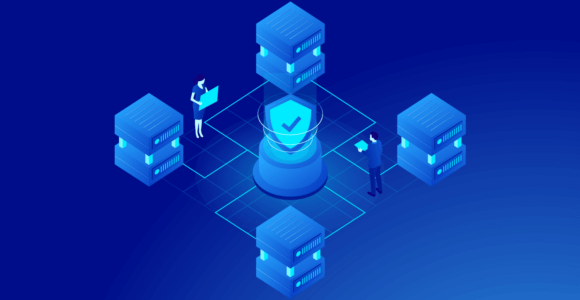The anonymous person or group known as Satoshi Nakamoto is commonly credited with creating not only the first modern cryptocurrency, but the blockchain architecture that makes Bitcoin and other cryptos possible as well. Nakamoto launched the Bitcoin blockchain and cryptocurrency in 2009.
Blockchain Before Bitcoin
Bitcoin is indisputably Nakamoto’s creation, but blockchains were invented in another time and place entirely. A generation before Nakamoto’s white paper, a University of California at Berkeley (California) doctoral candidate named David Chaum outlined a blockchain database in his dissertation, “Computer Systems Established, Maintained, and Trusted by Mutually Suspicious Groups.” That was in 1982: 27 years before Bitcoin. There were decentralized databases before Chaum, but if you are ever on a game show and asked who invented blockchain, citing Chaum should win you the prize. When was blockchain invented? 1982.
Chaum’s suspicious networks weren’t specifically designed to support digital currencies, but the connection was obvious. Drawing on his work in blockchain technology, Chaum launched a company called DigiCash in 1989. In 1995, the company introduced a cryptocurrency variously called digicash, eCash, and cyberbucks.

DigiCash’s digital currency promised to deliver many of the features of modern cryptocurrencies. The company emphasized anonymity as a key benefit. Not even the government could decipher encrypted eCash transfers, the company said. But Chaum was unable to convince banks to support the project, and without an internet infrastructure to support peer-to-peer transactions and only exchanges, the project failed. DigiCash declared bankruptcy in 1998.
History Nearly Repeats Itself
In 2008, the history of blockchain technology got interesting when a related research paper appeared in online discussion forums. The paper was titled “Bitcoin: A Peer-to-Peer Electronic Cash System” and it was attributed to Satoshi Nakamoto.
Experts say the blockchain protocol outlined in the Nakamoto research paper is essentially the same as David Chaum’s. The only substantive difference is the addition of the Bitcoin proof-of-work consensus mechanism for validating data blocks and mining coins. Still, most people think it was Satoshi Nakamoto who created blockchain technology.
Nakamoto uploaded blockchain source code to SourceForge in 2008 so software developers around the world could contribute to the project. The first modern blockchain was launched in January 2009 along with the associated cryptocurrency, Bitcoin.
It appeared for a while that the Bitcoin project would meet the same unhappy fate as DigiCash. It took more than two years for a Bitcoin to reach the symbolic value of one U.S. dollar. It wasn’t until 2017 that Bitcoin’s value reached 1,000 euros. Since then, the coin’s value has retained its characteristic volatility while trending sharply upward.
An abundance of Blockchains
Bitcoin was the world’s only viable blockchain and cryptocurrency for two years. In 2011, developers released blockchain-based cryptos called Litecoin and Namecoin, both derivatives of the Bitcoin project. Peercoin followed in 2012. The next year saw the introduction of five blockchains, including the first memecoin, Dogecoin.
In 2015, the Ethereum blockchain was introduced by a team that included contributors to the Bitcoin project. Ethereum was different. Other blockchains existed only to support specific cryptocurrencies. Ethereum was introduced as a platform for running decentralized applications. The Ethereum blockchain holds executable source code in addition to data, so it serves as the foundation for thousands of blockchain-based applications. The Ethereum blockchain’s flexibility makes it ideal for hosting both NFTs and dApps.
Today, researchers are experimenting with variations on the basic blockchain architecture. Mainstream blockchains perform well under light loads but have problems scaling up to support full-scale applications. Transaction fees soar and processing times stretch beyond hours to days. Many of the new blockchains incorporate innovative solutions to these problems.
Researchers continue to experiment with consensus mechanisms, the coordination of parallel subchains, private blockchains, and other technical issues. Most new cryptocurrencies are introduced to support specific applications or industries, not to serve as general-purpose replacements for government-issued fiat currencies. Many new blockchain apps have nothing to do with cryptocurrency at all. Those applications sometimes benefit from modifications of the basic blockchain architecture.
Even if the world’s governments were to legislate the cryptocurrency market out of existence, these blockchains would still fulfill essential functions in healthcare, identity management, supply-chain management, entertainment, and other fields. Blockchain is here to stay.
NOTE
This text is informative in nature and should not be considered an investment recommendation. It does not express the personal opinion of the author or service. Any investment or trading is risky, and past returns are not a guarantee of future returns. Risk only assets that you are willing to lose.




 IOS
IOS Android
Android